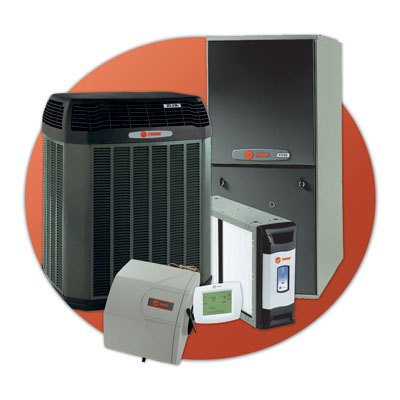Receive up to $1500 in tax credits on a new
high efficiency furnace or air conditioner!
Thanks to the recent government “economic stimulus” program, you can now earn a 30% tax credit up to $1500 when you purchase a qualifying furnace or air conditioner from Ultra Heating & Cooling.
It’s not a tax deduction, it’s real cash in your pocket! If you have a tax liability of $2500 at the end of the year, you’ll only owe $1000 if you purchase qualifying equipment this year.
Now is the best time to replace your old inefficient furnace and air conditioner and save money on your energy bills year after year.
Call now to receive more information on how you can take advantage of this time-sensitive incentive. After all, it’s not every day that Uncle Sam wants to put money in your pocket!
Call before June 30th and receive an additional $500 discount on a new complete high-efficiency furnace and air conditioning system.
TAX CREDIT DETAILS
*The U.S. Internal Revenue Service (IRS) is now providing up to a $1,500 tax credit on extra-high efficiency heating and cooling equipment.
*Tax credits are only for equipment purchased between January 1, 2009, and December 31, 2010.
*Below are the minimum requirements for qualification. Qualifying equipment must have a valid AHRI certificate, which you can obtain from your dealer. Not all equipment qualifies. See your dealer for details.
o Split-system air-source heat pumps: at least 15 SEER, 12.5 EER and 8.5 HSPF
o Packaged air conditioners: at least 14 SEER and 12 EER
o Packaged heat pumps: at least 14 SEER, 12 EER and 8 HSPF
o Gas furnaces: at least 95% AFUE
Now is a great time to consider purchasing a heat pump instead of an air conditioner. Heat pumps work just like an air conditioner in the summer, but also provide heat in the winter. You can pair a heat pump with a gas furnace, and run the heat pump in mild weather and the furnace is colder temperatures, saving you money on your winter utility bills. And because many heat pump models qualify for the federal tax credit, you'll get a wider range of choices and price ranges than with an air conditioner.
Frequently Asked Questions on the 2009 and 2010 Federal Tax Credits for Energy Efficient Residential HVAC Equipment.
On February 17, 2009, President Obama signed the “American Recovery and Reinvestment Act of 2009 (ARRA)” into law. This bill combines spending and tax incentives to move the American economy forward by investing in infrastructure and increasing energy efficiency of residential/commercial buildings in America.
Specifically for the HVAC business, this legislation makes a number of important changes to the existing tax incentives for homeowners who make qualified improvements on high efficiency HVAC products and equipment in their primary residences. Overall, the tax credits available have been increased up to 30% of the installed cost of those improvements, or up to a total of $1,500 for residential HVAC products installed from January 1, 2009 through December 31, 2010.
The following information has been prepared to help answer those frequently asked questions on this complicated issue of tax credits for residential HVAC equipment. Before filling for tax credits on any of the listed models, it is always recommended that homeowners/taxpayers consult with a tax professional to review the provisions of the “American Recovery and Revitalization Act of 2009” (ARRA) and application in reference to Section 25C of the Internal Revenue Code. Taxpayers should keep copies of invoices and receipts for documenting their actual expenditures, but only need to file Form 5695 with their tax returns to get the tax credits.
Frequently Asked Questions Concerning the Revised Residential HVAC Tax Credits for 2009 and 2010
What are the qualifying criteria for residential equipment to get these tax credits?
The revised criteria for qualifying residential HVAC equipment under Section 1121 of the ARRA legislation are as follows.
1. A natural gas, propane, or oil furnace rated at 95.0% AFUE or higher.
2. Any furnace equipped with an advanced main air circulating fan that uses no more than 2% of the total furnace total energy use.
3. A central air conditioner that achieves the highest efficiency tier established by the Consortium for Energy Efficiency as in effect on January 1, 2009 (which is 16 SEER or higher, 13 EER or higher rating). Previously, the criteria were 15 SEER, 12.5 EER which is no longer valid.
4. An electric air source heat pump that achieves the highest efficiency tier established by the Consortium for Energy Efficiency as in effect on January 1, 2009 (which is 15 SEER or higher, 12.5 EER or higher, 8.5 HSPF or higher rating). Previously, the criteria were 15 SEER, 13 EER, 9 HSPF as stated in the text of the legislation rather than being tied to the CEE highest efficiency tier level for electric air source heat pumps.
What is an “advanced main air circulating fan?
An advanced main air circulating fan is a blower/fan used in a natural gas, propane, or oil furnace originally placed in service by the taxpayer during the taxable year, and which has an annual electricity use of no more than two percent of the total annual energy use of the furnace (as determined in the standard Department of Energy test procedures). This criteria and tax credits do not apply to air handlers with variable speed motors, as the benefit of the advanced main air circulating fan has already been included in the energy efficiency ratings of the outdoor products.
What’s the difference between a tax credit and a tax deduction?
A tax credit applies directly against the taxpayers’ liability. A tax deduction applies against a taxpayer’s income, lowering the adjusted gross income and possibly moving the taxpayer to a lower tax bracket. Tax credits have a greater benefit to a taxpayer than a tax deduction. There are two categories of tax credits: Refundable and Non-Refundable. Residential Energy Tax Credits for 2009 and 2010 are considered to be Non-Refundable tax credits under the IRS regulations, just as the previous tax credits were for 2006 and 2007.
What is the difference between Non-Refundable and Refundable Tax Credits?
Most, but not all, tax credits are referred to as non-refundable credits. A non-refundable credit is a tax credit that can reduce your tax liability to zero (0), but not below. You must have tax liability on line 46 of Form 1040, line 18 of Form 1040A, or line 43 of Form 1040NR to claim a non-refundable tax credit. A refundable tax credit is a tax credit that can reduce your tax liability below zero (0). Because it is possible to receive a refund based on these types of credits, the credits are referred to as refundable.
Can a homeowner claim $1500 in tax credits for improvements made in 2009, and then again claim tax credits for more improvements made in 2010?
No, taxpayers are eligible for a total of $1500 in tax credits for improvements made over the combined two year period.
Can a homeowner use the $1500 tax credit towards a single appliance installation?
Yes, since the per appliance caps have been removed by this new legislation, a homeowner may use the entire $1500 in tax credits for installing a single qualified appliance, such as a furnace, air conditioner, heat pump, etc. up to 30% of the installed cost of that one appliance.
What happens if the 30% of the installed cost is less than the $1500 limit?
The homeowner can “bank” the remaining amount of the available tax credit towards the cost of other qualified improvements during the two year period. Any single item that the installed cost is more than $5000 will instantly reach the $1500 limit.
Does the tax credit apply to the cost of the equipment or equipment plus labor?
The tax credit applies to the installed cost of the equipment that qualifies for the tax credits, which includes labor for that specific installation.
Can a homeowner claim credits for improvements to a second home, such as a vacation home?
No, the tax credit program is only available for improvements made to the taxpayer’s primary residence or home, and may not be used for second or vacation homes
Can a small business that operates out of a townhouse and installs residential equipment in a commercial setting claim the credit?
No. The tax credit may only be claimed by taxpayers on their personal income taxes for improvements to their primary residence.
Do “Energy Star” Certified products meet the requirements for these tax credits?
Because there are different equipment definitions and product tiers used by the “Energy Star” program, note that most “ENERGY STAR” products do meet the criteria for these tax credits, but not all of them do. Refer to the qualifying criteria as shown on the “Energy Star” website and the criteria for the federal tax credits.
What if a taxpayer had made claims for tax credits on improvements made during 2006 or 2007 tax years?
The “lifetime caps” that placed limits on the total tax credits available to any taxpayer have been removed. Any previous claims do not count against the current $1500 tax credit limit.
What other types of energy efficiency improvements qualify for the tax credits?
Homeowners may be able to qualify for the tax credits if they make qualified improvements to windows and doors including skylights, storm windows and storm doors; roofing including metal and asphalt roofs; and insulation. All of these improvements qualify, but homeowner may only claim $1500 in total for any improvements. The exception to this is for geothermal heat pump applications and installations, where there is no limit on the tax credit amount.
How do homeowners claim the tax credits and receive their money?
Before filling for tax credits on any listed models, it is always recommended that homeowners/consumers consult with a tax professional to review the provisions of the “American Recovery and Revitalization Act of 2009” (ARRA) in reference to Section 25C of the Internal Revenue Code. Previously, the IRS has directed taxpayers to use Form 5695, Residential Energy Efficient Property Credit. Taxpayers should keep copies of invoices and receipts to document their actual expenditures, but only need to file Form 5695 with their tax returns to get the tax credits.
Should a contractor promise a homeowner that they will qualify for the tax credit?
No, as each taxpayer’s situation may be different. The contractor may not know if the taxpayer has already made other improvements that qualify, or if their tax situation will change by the end of the tax year. But to be safe, the contractor can always say "by installing qualified equipment, the taxpayer may be qualified to claim of 30% of the installed costs (up to a $1,500 limit) in tax credits." And the contractor should always advise the homeowner to refer to the applicable IRS forms and regulations.
What if a homeowner/taxpayer had already completed energy improvements under the provisions of the “Emergency Economic Stabilization Act of 2008” for 2009 that no longer qualify for tax credits under this new bill?
The “American Recovery and Revitalization Act of 2009” replaces all of the provisions of the previous tax incentives for these products. Refer to the appropriate IRS rules, regulations, and information on this topic.
What are the requirements for tax credits on package units used for residential applications and installations?
The information on the criteria for tax credits for packaged air conditioning and heating products is included in the reference material found at the end of this letter. Information for York packaged air conditioning products is available from the Commercial Product group since that product family falls under their responsibility.
What should be done with manufacturer’s tax credit certificates already published for 2009 tax credits?
Please note that there are significant changes to the qualifying criteria for high efficiency products and to other provisions related to HVAC equipment under this new legislation. Because of these changes, previous versions of tax certificates which specify qualifying residential equipment are no longer valid and should not be used at this time.
Since the ARRA legislation is retroactive for all qualifying equipment installed in 2009, updated certificates showing qualifying equipment have been prepared. Certificates can also be downloaded from the AHRI and GAMA websites indicated at the end of this document if manufacturer’s certificates are not yet available.
Additional Resources:
This document was prepared using information from a number of sources, including the following websites. Additional information may be found at:
ACEEE (American Council for an Energy-Efficient Economy)
Air Conditioning Contractor of America (ACCA)
AHRI (Air Conditioning, Heating, and Refrigeration Institute)
CEE (Consortium for Energy Efficiency)
Energy Star
GAMA (Gas Appliance Manufacturers Association)
Heating, Air conditioning and Refrigeration Distributors International (HARDI)
Tax Incentives Assistance Project
Reference Material:
Consortium for Energy Efficiency (CEE) - High Efficiency Specification, January 1, 2009
Document prepared



24 Hour Emergency Service & Repair
419-877-9797 419-874-9499 419-478-1710 877-21ULTRA

419-877-9797 419-874-9499 419-478-1710
24 Hour Emergency Service & Repair
